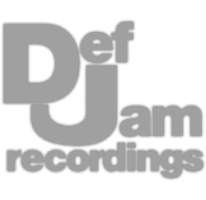Professional Analog Mastering.
Professional Analog Mastering.










Ducking an effect, or attenuating it whenever another signal occurs, is incredibly valuable when mixing vocals.
This is most true with reverb - a reverb’s pre-delay can be helpful for retaining the vocal’s intelligibility; however, ducking reverb is by far the best way to add vocal reverb without getting that annoying washed-out sound.
The problem is I can think of only 1 reverb plugin that includes a ducking function - that being Seventh Heaven, the Bricasti M7 emulation.
So, unless you have this plugin, it would seem that you’d have to rely on pre-delay and hope you don’t lose the vocal.
Fortunately, I found a way to duck any reverb, delay, or any effect you want, and you can do it with most stock plugins.
Instead of inserting the reverb on the vocal track, use a send, auxiliary, or parallel track and insert the reverb on it.
Dial in the reverb settings as you see fit, but be sure to set it to 100% wet. Then, after the reverb, insert a compressor that’s capable of external side-chaining. I’ll use this Logic stock compressor, but use whichever one you want.
For the side-chain, select the original unprocessed vocal, and ensure that the compressor’s side-chain is set to external.
At this point, the reverb is being attenuated by the dry vocal - so it really doesn’t take too long to set this up.
But this gets even better when you consider how much control you get over the ducking.
For example, I can set a super quick attack and longer release to turn down the reverb right when the vocal starts and to keep it attenuated until the vocal passage ends.
Or, I could set a quick release so that each vocal phrase triggers the ducking.
Or, if I want the very beginning of the vocal to reverberate before the reverb is turned down during the middle of the vocal’s phrase, increase the attack to about 50ms to let a little of the vocal through before compression to the reverb starts.
Maybe you want to use an 1176, or maybe an LA2A - it’s up to you.
In other words, you can do just about any compression configuration and have complete control over how the vocal’s reverb behaves.
So, let’s listen to this using stock plugins, but whenever you try it, substitute these with whatever plugins and settings that you want.
Watch the video to learn more >
I don’t use this trick all that often, but when it’s needed, it can really save a vocal.
Have you ever had a vocal with so much sibilance that de-essing doesn’t seem to work? Either it still sounds harsh, or you compress the sibilance so much that now it sounds completely unnatural.
After having that issue on some vocals I came up with this trick so I hope it can help you out.
In short, we’re going to use subtle phase cancellation to turn down esses - and we’ll do it dynamically so it only happens when the esses are high enough in amplitude.
To do this you’ll need a linear phase EQ that offers dynamic bands. I’ll use this pro-Q3, but a great affordable alternative is this Toneboosters EQ.
To start, send the vocal to an auxiliary or parallel track.
Then, insert a utility plugin and invert the phase. At this point, if you play the 2 at the same time, and they’re equal in amplitude, the vocal should completely null.
Next, insert the linear phase EQ on the auxiliary track - and of course, ensure that it’s set to a linear phase mode.
Next, use high and low pass filters to isolate the range responsible for the sibilance.
This will likely be between 5kHz to 10kHz, but it varies from vocal to vocal.
Last, for the EQ, create a bell filter between these 2 filters and make it dynamic so that it great expands or dynamically amplifies the isolated range. Then, lower the aux track’s channel fader by a good amount.
Since the parallel signal is inverted, whenever sibilance triggers the dynamic band, more phase cancellation will occur to the range.
In turn, the sibilance that triggered it is attenuated.
If the channel was set at 0dB, then the range would be attenuated way too much. However, since we lowered it significantly, then only a little bit of the range is attenuated when sibilance triggers the bell filter.
So, let’s take a listen to it - I’ll start with the aux track set too high so that you can really hear the attenuation. Then, I’ll reduce it to a level that sounds good to me.
Notice how smooth the attenuation sounds - since we’re not compressing the range, which causes distortion, and instead naturally canceling it out, we achieve a really natural sound.
Watch the video to learn more >
Sometimes you want saturation or distortion to affect the full vocal - maybe you’re trying to emulate a piece of hardware, or you want a vintage sound.
But sometimes you just want the saturation to fill the frequency spectrum in a musical way - in other words, in a way that relates to the musical content of the performance.
You can achieve this with multi-band saturation and causing saturation only to the range that includes the fundamental frequencies of the performance.
However, there are only a couple of plugins that let you do this.
Instead of buying those, you can use this method to expertly control the harmonics included in your vocal.
Like the 2 previous tricks, send the vocal to an auxiliary or parallel track. First, insert a linear phase EQ, and use a low-pass filter to isolate the vocal to just the fundamental range.
Then, insert whichever saturation that you want. I’ll use this free GSat plugin, but try different plugins and see which one suits the vocal best.
Then, begin to saturate the isolated fundamental range. Since the fundamental is causing saturation, the harmonics are much more likely to musically relate to the vocal’s performed notes.
If I was saturating the full vocal, then sometimes the fundamental will trigger the saturation; however, it could also be other parts of the performance. This way we can be certain that the harmonic distortion is related to the performed note.
So, at this point, we have the vocal’s fundamental and the related harmonics, but I don’t need 2 instances of the fundamental, 1 from the original and 1 from this parallel track. So, I’ll insert another parallel EQ after the saturation plugin and use a high-pass filter to attenuate the fundamental frequencies.
With this done, this parallel track now contains only harmonics of the fundamental, and I can blend in the saturation with the original clean vocal. Not only does it fill the vocal incredibly well and sound musical, it makes it super easy to automate.
Furthermore, I could add additional effects to this parallel track if I want.
So, it offers a lot of control and is the only method for perfectly isolating harmonics.
Let's take a listen as I introduce the parallel track and then vary the amount of distortion by adjusting the channel fader.